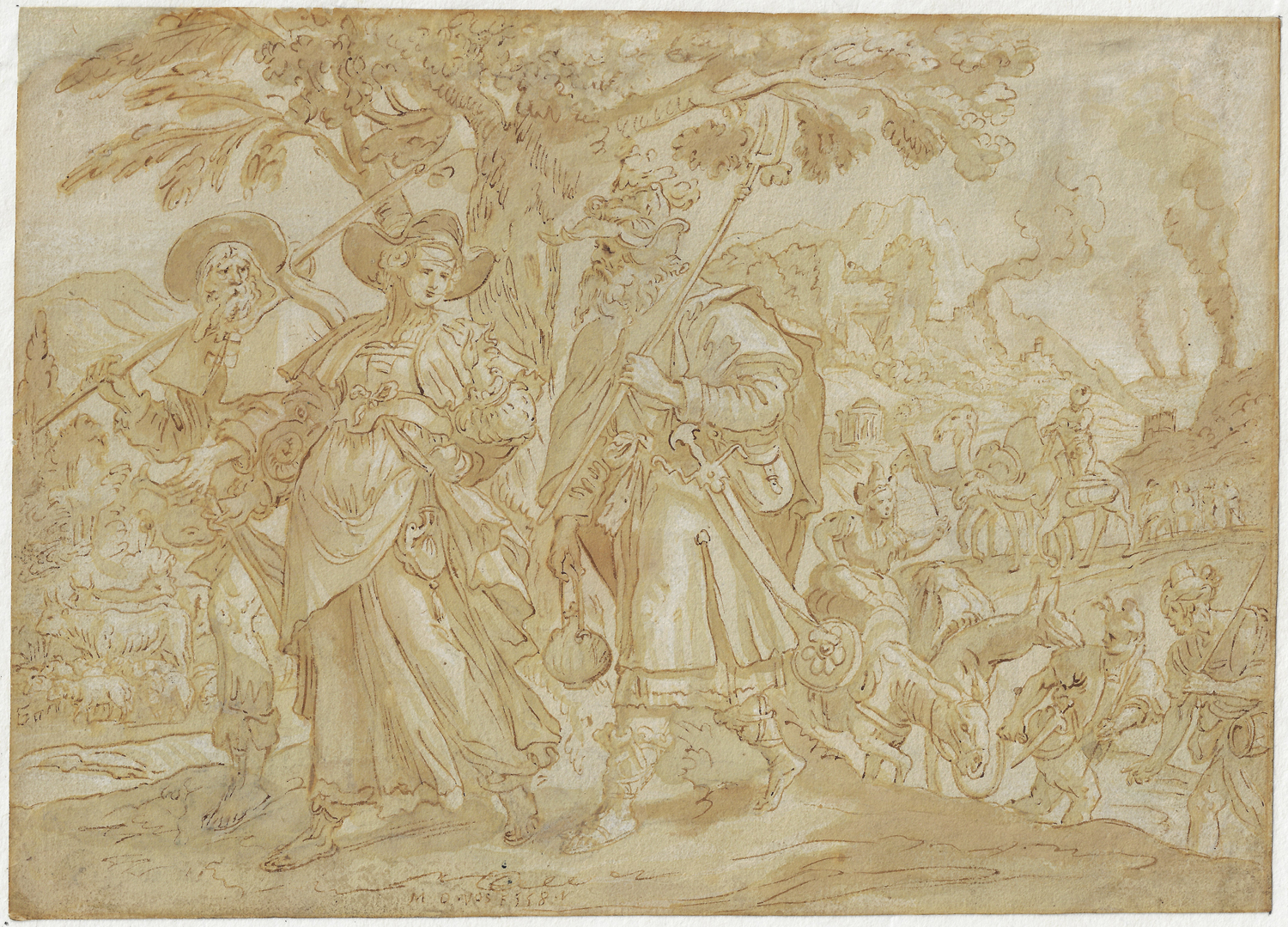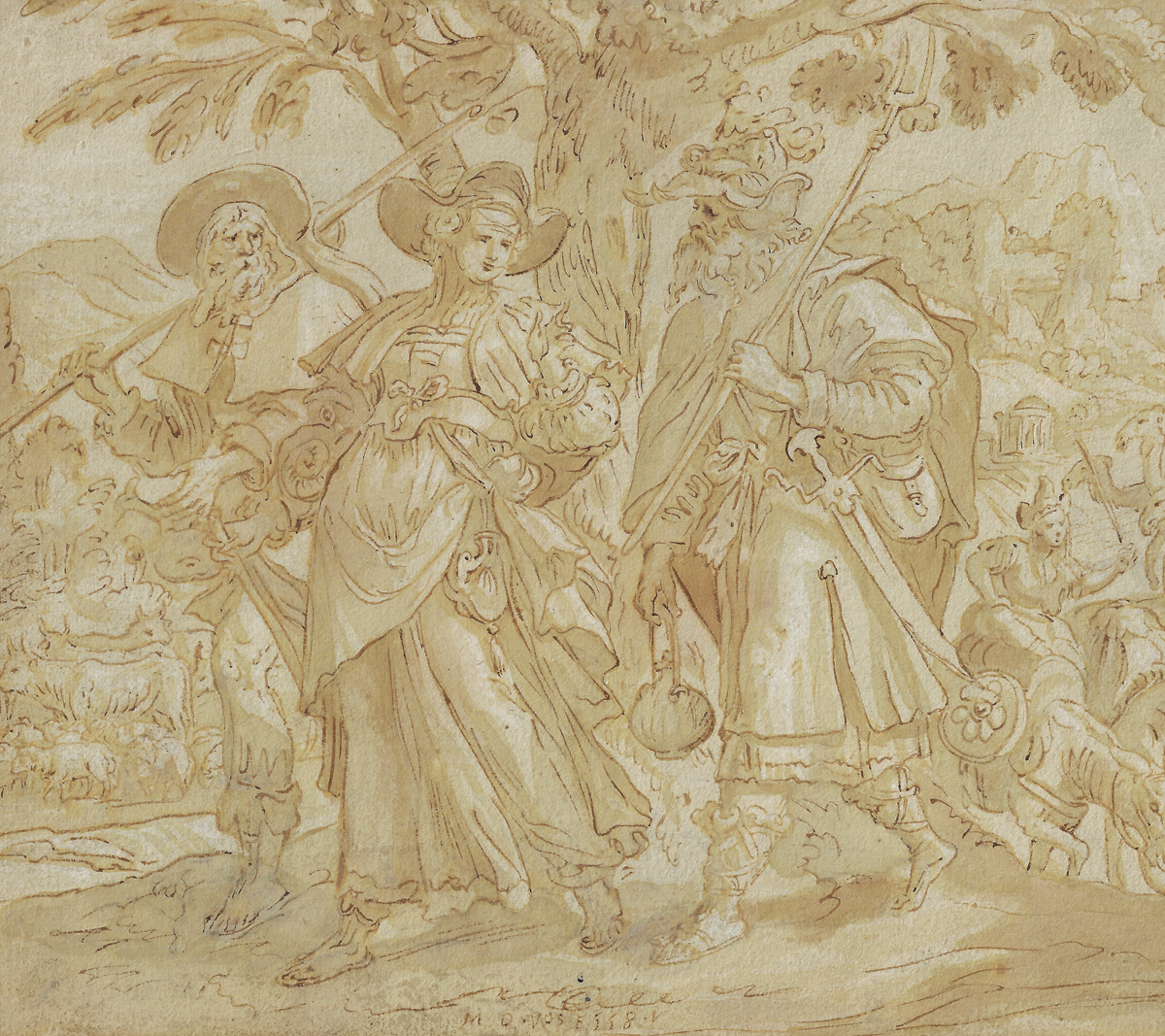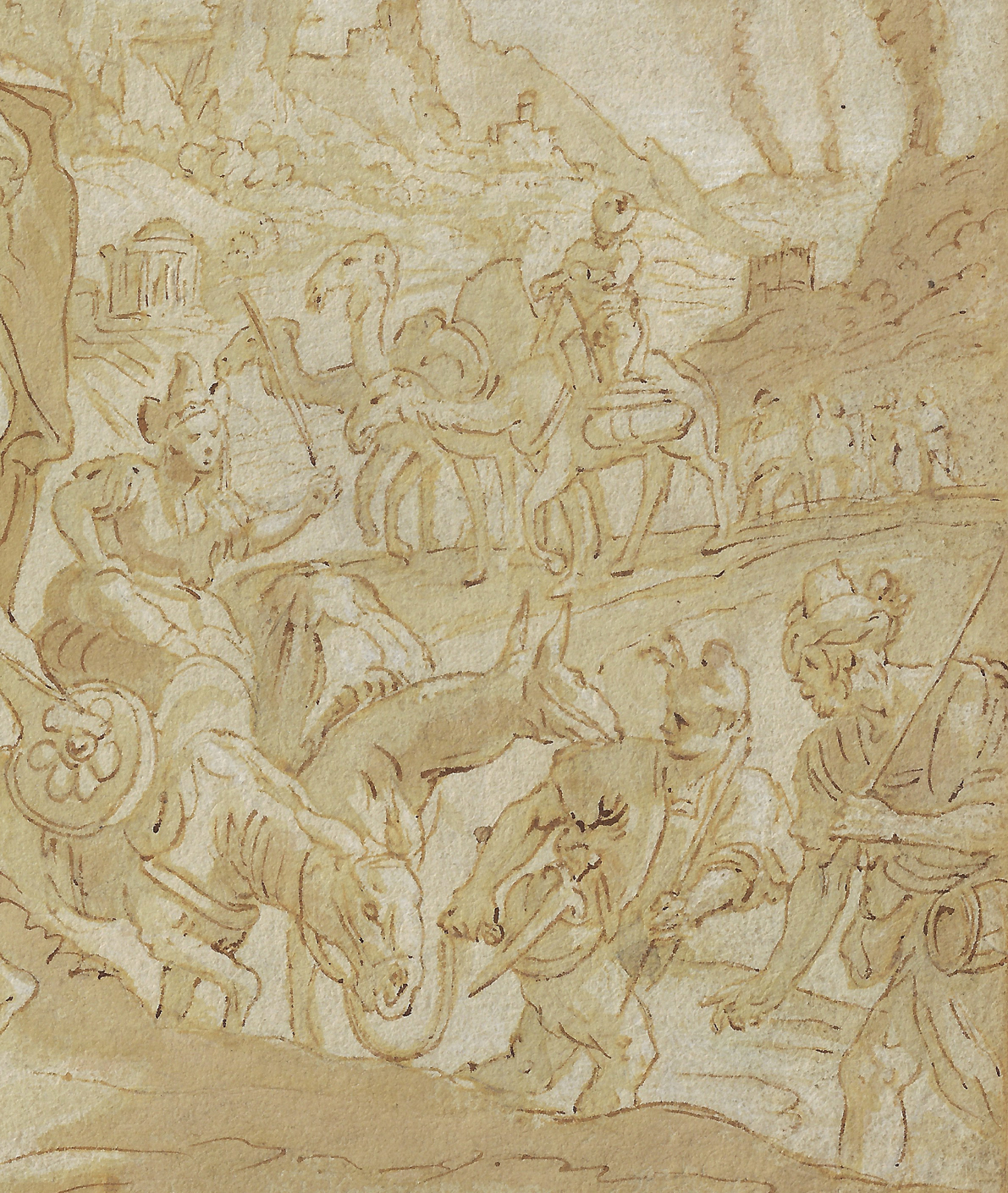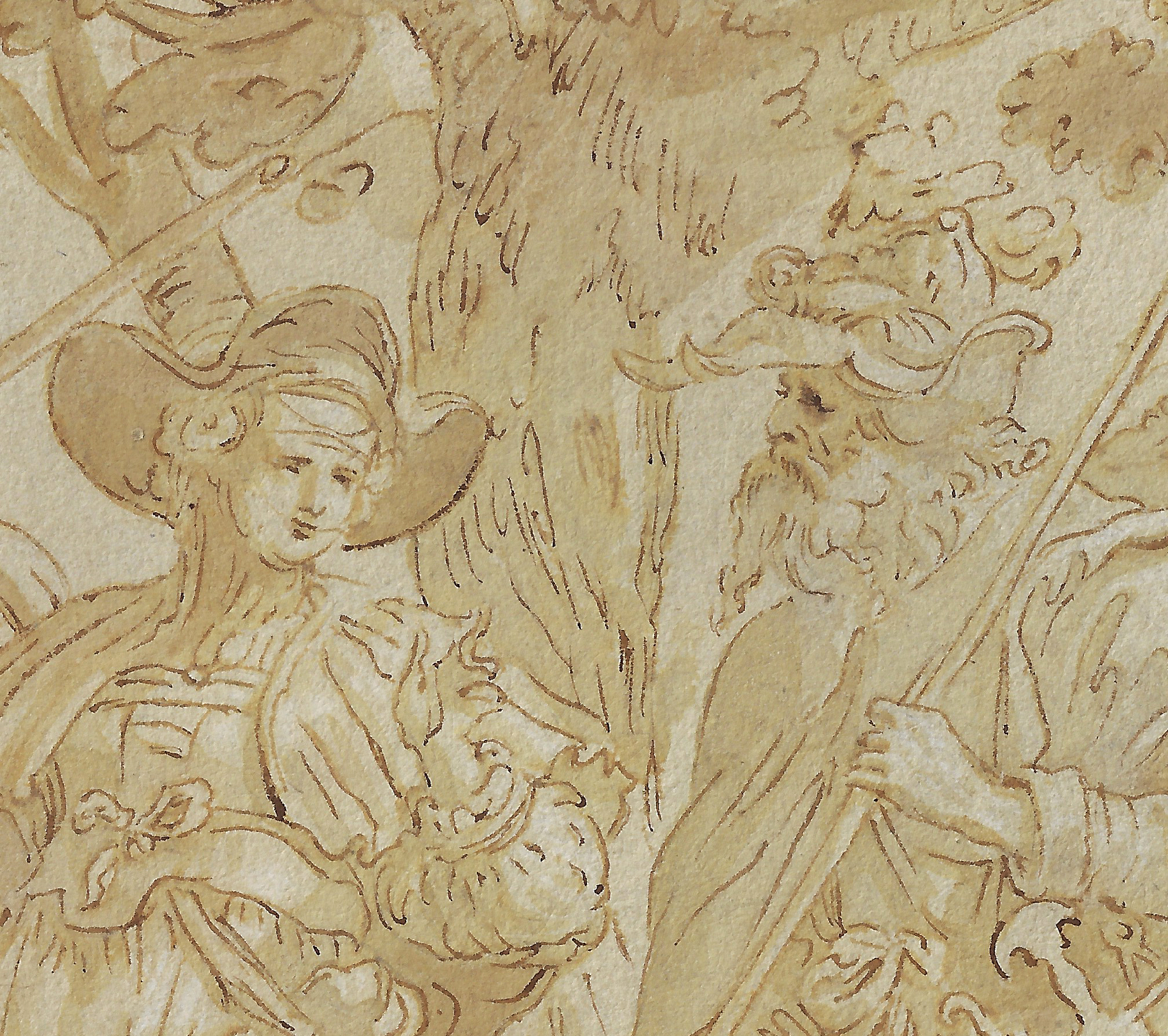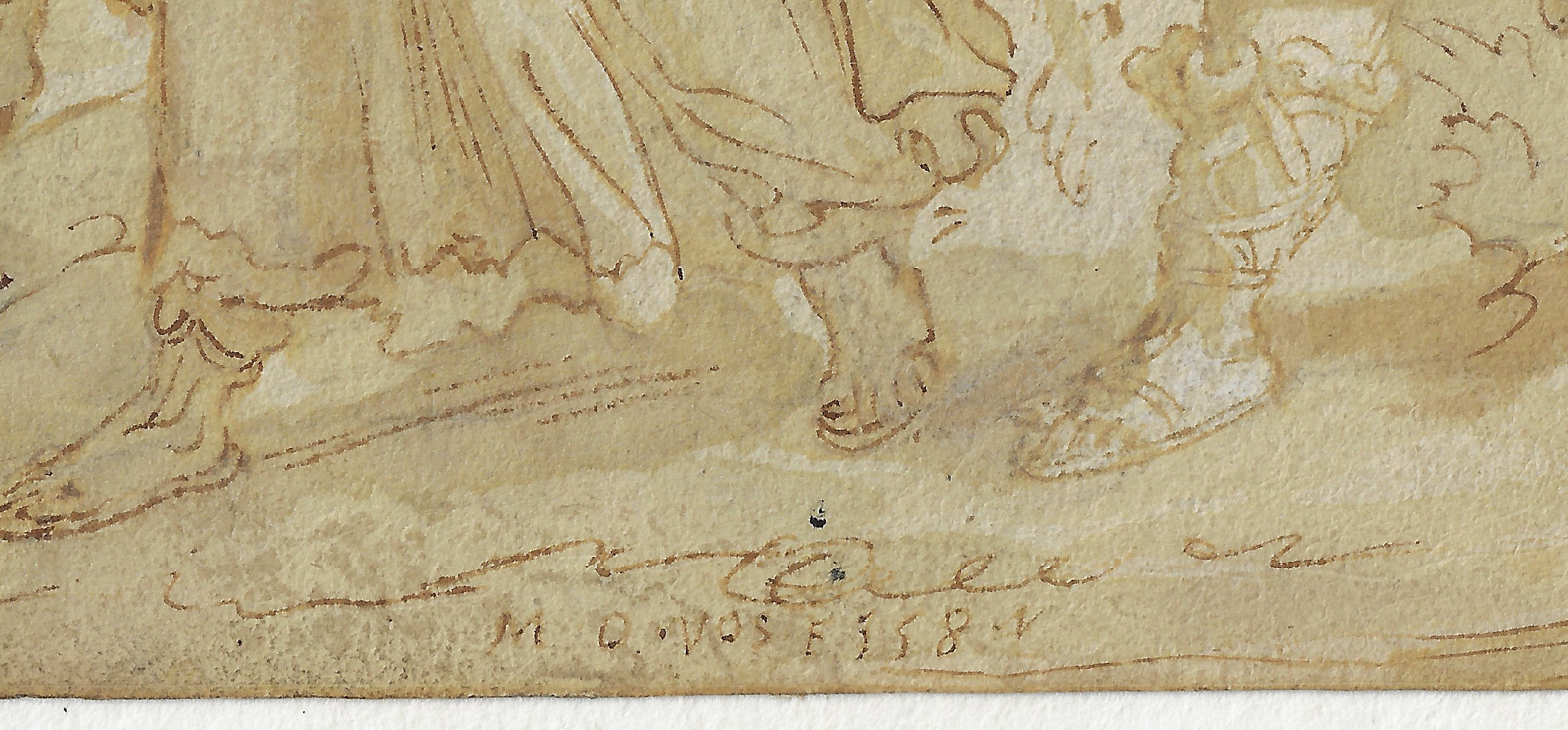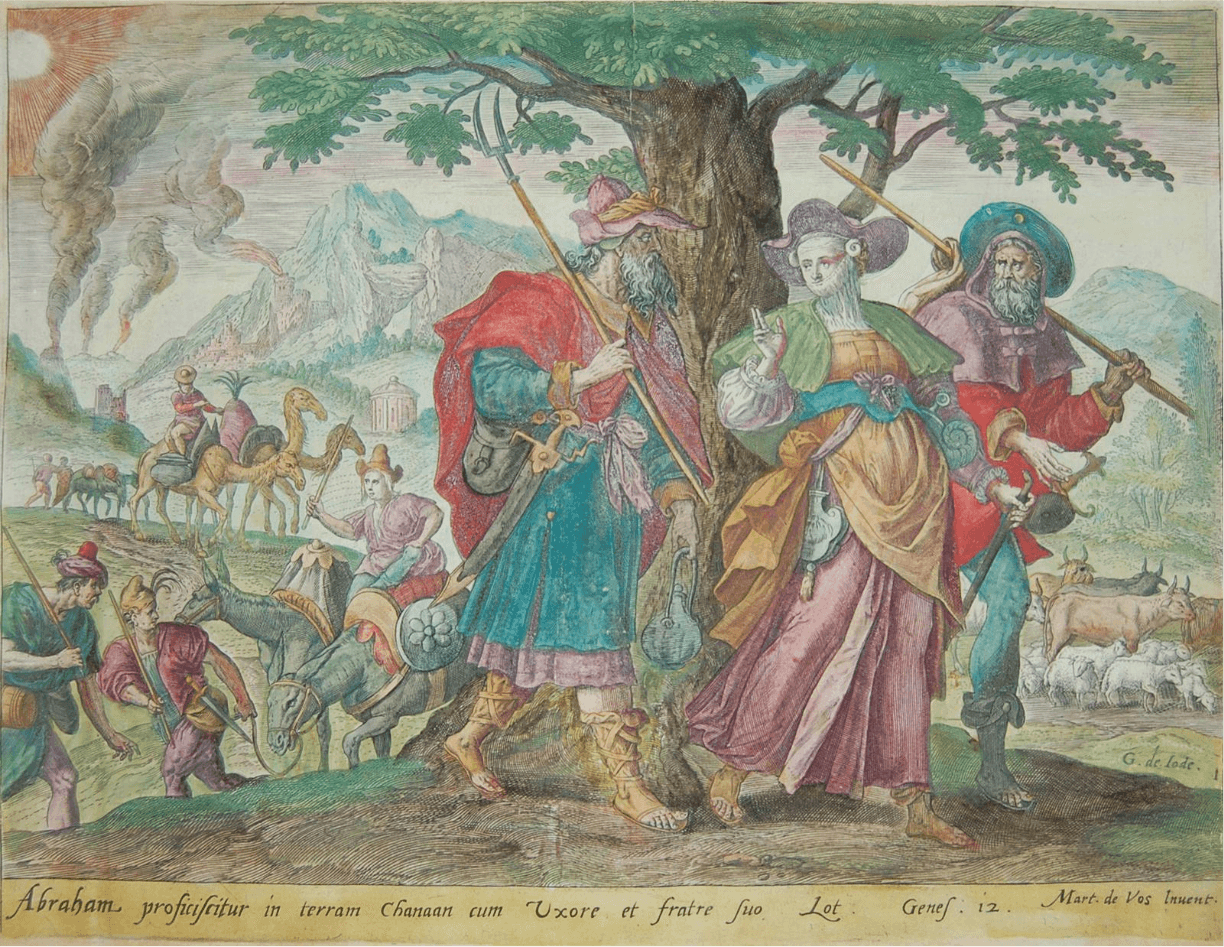MAERTEN DE VOS (Antwerp 1532 – 1603 Antwerp)
Maerten de Vos (Antwerp 1532 – 1603 Antwerp)
Abraham and Lot and their family leaving for Canaan
Pen and brown ink, brown wash, traces of black chalk, 193 x 266 mm
Signed and dated ‘M. D. Vos F 1584’ (lower centre)1
Provenance
~ Prof. J. Isaacs; Sotheby’s London 27 February 1964, lot 147
~ With Elizabeth Meyer, Paris, catalogue 1992, no. 1, repr.
~ Private collection, France
Engraved
Published by Gerard de Jode (1516/17–1591), part of the series Thesaurus sacrarum historiarum veteris testamenti, elegantissimis imaginabus expressum excellentissimorum in hac arte virorum opera: nunc primum in lucem editus, Antwerp 15852
***
Maerten de Vos lived and worked almost all his life in Antwerp.3 He trained there, became a master in St Luke’s Guild in 1558 and was appointed Deacon in 1572. In his youth he travelled to Italy to see the work of his Italian contemporaries and the great Renaissance masters. In Venice he was particularly impressed by Tintoretto, for whose paintings he even painted backgrounds, according to Carel van Mander. On his return to Antwerp he set up his own studio, which gradually acquired prominence in the city. Notably after the Iconoclasm of 1566 he received many church commissions to paint new altarpieces.
After the death of Frans Floris in 1570, De Vos became the leading painter in Antwerp. His influence on the pre-Rubens generation was significant. Ironically enough, De Vos had Protestant sympathies, but owed his reputation to his work for the Roman Catholic church.
De Vos’s output of drawings was profilic. Some 500 extant drawings are attributed to him, but in view of the large number of engravings made after his drawings, there must have been many more. By far the majority of his drawings were intended to be engraved, only a small amount of the rest serving as designs for paintings or as picture drawings in their own right.4
The present drawing is one such design for a print. In the foreground, to the right, Abraham, his wife Sarah and Lot are walking on a field carrying bags, flasks and weapons; behind, men carrying goods with donkeys and camels. This sheet by De Vos is the preparatory drawing for en engraving (in reverse sense) by Gerard de Jode, part of a set of six engravings on the ‘Story of Abraham’.5 A complete set of the engravings with contemporary colouring survives in the print room of the British Museum, including the print after the present drawing (fig.).6
SOLD
1.In the past the inscription has been interpreted as ‘M.D. Vos F558N’, but given the dating of the corresponding engraving (1585), it is likely that the year should be read as ‘1584’.
2. The New Hollstein: Dutch and Flemish etchings, engravings and woodcuts 1450-1700, Amsterdam 1993– , De Vos, no. 26.I.
3. For the artist, see Victor A. Dirksen, Die Gemälde des Martin de Vos, Berlin 1914 and A. Zweite, Marten de Vos als Maler: ein Beitrag zur Geschichte der Antwerpener Malerei in der zweiten Hälfte des 16.Jahrhunderts, Berlin 1980.
4. See A. Reinsch, Die Zeichnungen des Marten de Vos: stilistische und ikonographische Untersuchingen, diss. Tübingen 1967.
5. On this series see Hans Mielke, 'Der Thesaurus Veteris et Novi Testamenti des GdJ', in Zeitschrift für Kunstgeschichte 1975, pp.29-83, see n. 5, p.78.
6. The engraving after the drawing is inv. no. P_1968-1018-1-22; engraving and etching, 203 x 265 mm, lettered, below image, with one sentence in Latin: 'Abraham proficitur...Lot. Genes.12'. Inscribed on image 'G. de Jode' and numbered 1; below: 'Mart. de Vos Invent.'.
